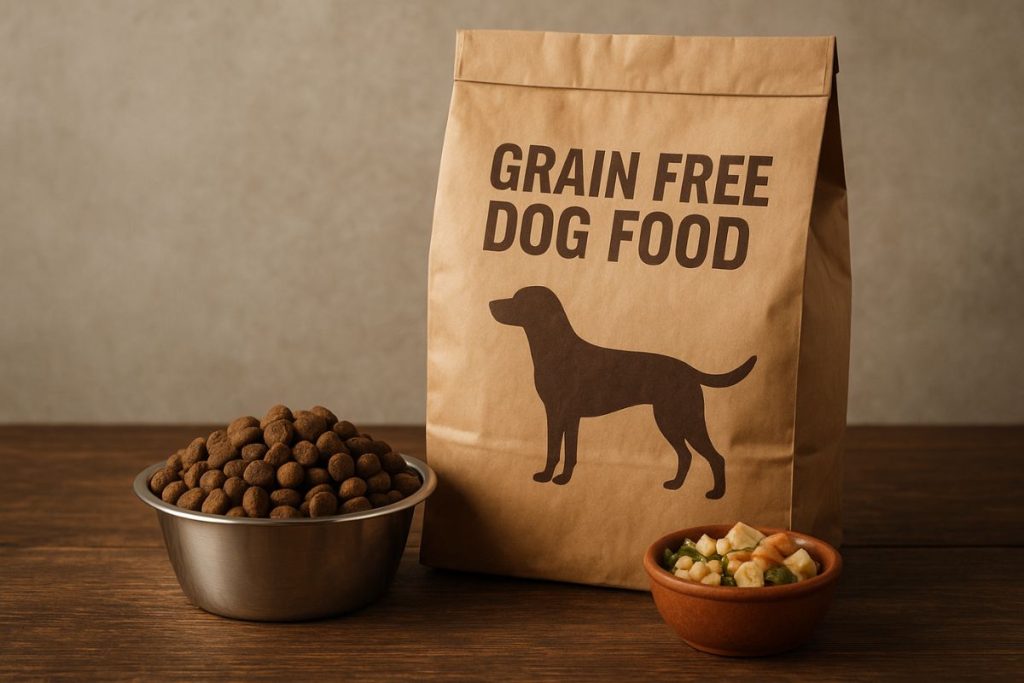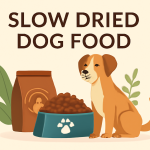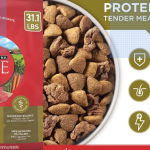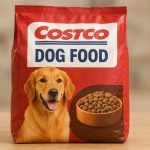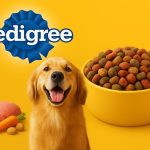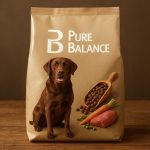Great! I’ll write a comprehensive, fully optimized 4000-word blog post on the topic ‘Grain Free Dog Food: Healthy Alternative Diets,’ with SEO best practices in place. The article will focus on the primary keyword ‘orijen dog food’ and integrate secondary keywords such as wellness dog food, instinct dog food, farmina dog food, and zignature dog food. I’ll include engaging headings, keyword-rich content, FAQs, multimedia optimization, and everything needed to help it rank well in 2025 search results. I’ll let you know as soon as it’s ready for your review.
Meta Title: Orijen Dog Food: Healthy Grain-Free Diets for Dogs
Meta Description: Discover how Orijen dog food and grain-free diets support dog health with high-protein, natural nutrition. Learn about top grain-free brands and diet tips.
Orijen Dog Food: Healthy Grain-Free Diets for Dogs
Orijen dog food exemplifies the premium grain-free movement, focusing on real meat and natural ingredients to fuel dogs’ health. In a grain-free diet, common cereals (wheat, corn, rice, etc.) are replaced with alternative carbs or extra meat to match a dog’s carnivorous needs. These “alternative” diets often feature high-protein recipes that mimic ancestral canine nutrition. Modern pet owners view Orijen and similar grain-free brands as a healthy alternative diet, especially for dogs with sensitivities to grains. This article explores the grain-free trend – its benefits, concerns, and leading brands – to help you make informed choices for your dog.
A bowl of premium grain-free dog kibble, like Orijen’s, highlights diets rich in meat and free of grains. Grain-free dog foods focus on high-quality animal proteins (chicken, fish, beef, etc.) and wholesome fruits or vegetables instead of wheat or corn. For example, Orijen’s Original recipe is “crafted with 85% quality animal ingredients” (fresh chicken, turkey, wild-caught fish, and organs) to deliver nutrient-dense, biologically appropriate nutrition. These ingredients support immune health, skin and coat condition, and digestive health in dogs. By emphasizing protein and whole-prey ingredients, grain-free diets offer a natural, high-energy alternative to traditional grain-based kibbles.
What Is Grain-Free Dog Food?
Grain-free dog food is a formula made without common grains like corn, wheat, rice, barley or soy. These diets arose decades ago from veterinarians’ efforts to help dogs with food allergies. Pet nutritionists ensured that grain-free kibbles still meet AAFCO standards for complete nutrition. In practice, grain-free recipes replace grains with higher amounts of meat, fish, eggs, legumes (peas, lentils), or potatoes. The goal is a protein-rich diet closer to what wild canines would eat.
Orijen dog food offers many grain-free recipes (Original, Regional Red, Six Fish, etc.) formulated for all life stages. For example, the Orijen Original dry food contains 85% animal ingredients (meat, organs, bone) and 0% grains. Similarly, other brands like Wellness, Instinct, Farmina and Zignature craft grain-free lines to serve dogs’ needs. While grain-free dog food is often marketed as a healthier alternative with fewer “fillers,” it’s important to understand the full picture of how grains and substitutes affect nutrition.
Benefits of Grain-Free Diets
Grain-free diets can offer genuine benefits for many dogs, especially those with specific nutritional needs or sensitivities. Key advantages include:
- Reduced Allergens: By eliminating grains (a common dog allergen), many grain-free foods can alleviate symptoms like itching, vomiting or diarrhea. If your dog is allergic to wheat, for example, switching to a grain-free kibble (with proteins like chicken or lamb instead) may reduce flare-ups.
- High Protein Content: Grain-free recipes typically emphasize meat and fish as primary ingredients. This means much higher crude protein levels. For instance, Orijen’s grain-free formulas deliver very high protein (around 42.9% in dry matter) compared to many conventional brands. Higher protein supports strong muscles, energy and lean body condition in active dogs.
- More Natural Nutrition: Proponents argue grains aren’t a natural part of a dog’s ancestral diet. Grain-free diets aim to mimic wild canines by focusing on meat, bone and organs (WholePrey ingredients) with limited carbs. This approach provides a spectrum of nutrients (glucosamine from bone, vitamins from organ meat) that align with natural canine biology.
- Digestive Health: Many owners report better digestion on grain-free food. Replacing grains with easily digestible sources (like pumpkin or sweet potato) and added fiber can be gentler on some dogs’ stomachs. Brands often add probiotics and prebiotics to grain-free formulas; for example, Instinct and Zignature both include live cultures to support gut health. A healthier gut can mean more efficient nutrient absorption and better stool quality.
- Whole-Body Wellness: Quality grain-free kibbles often include superfood fruits, vegetables and supplements (antioxidants, omega-3 fatty acids, vitamins). This “wholistic” approach can boost immune function, skin and coat condition, and joint health. Wellness pet foods, for instance, advertise recipes that support the “Five Signs of Wellbeing” through balanced nutrients.
Overall, the benefit of a grain-free dog diet depends on the individual dog. According to pet nutrition experts, the above claims do hold appeal, but results can vary. For many dogs, a high-quality grain-inclusive diet is just as healthy. But for dogs with documented grain sensitivities, or owners seeking a premium, protein-focused food, grain-free is a valuable alternative.
Potential Concerns and Controversies
No diet is perfect for every dog. Grain-free diets have been under scrutiny, so it’s important to understand the concerns:
- Dilated Cardiomyopathy (DCM) Link: Starting in 2018, the FDA investigated possible links between some grain-free dog foods and canine DCM, a heart disease. Most of the reported cases involved diets high in peas, lentils or potatoes (common grain substitutes) rather than grains per se. As of the latest updates, there is no definitive proof that grain-free diets cause DCM. Many experts emphasize that problems seemed tied to legume-heavy (pulse) diets by boutique brands. The veterinary research consensus is that grain-free diets simply need careful formulation – and that balance of nutrients (including taurine, an amino acid) is key.
- Nutritional Balance: Grains themselves are not inherently bad: they provide fiber, B vitamins and energy. PetMD explains that grains often “promote healthy digestion, a robust immune system, and strong muscles”. Removing all grains means kibbles rely on other ingredients to replace those benefits. If a grain-free food is low in fiber or certain micronutrients, it may be less complete. That’s why all major pet foods (grain-free or not) must meet AAFCO standards for complete nutrition. Always choose diets (like Orijen, Wellness CORE, etc.) that provide the full nutrient profile your dog needs.
- Cost and Accessibility: Premium grain-free formulas often come with a higher price tag. For example, Orijen’s high-meat recipes cost significantly more per pound than some other brands. Budget-conscious owners may need to compare options; luckily there are good mid-range grain-free brands (Instinct, Farmina) and value lines (some store brands) to choose from. Also, switching to grain-free may require shopping in specialty pet stores or online if local options are limited.
- Not a One-Size-Fits-All: Grain-free is not a universal solution. As Figo’s pet insurance blog notes, these diets shouldn’t be seen as a “magic bullet” for all dogs. A healthy dog without allergies or digestive issues may do perfectly well on a high-quality grain-inclusive diet. Vets often recommend grain-free formulas only if medically indicated, such as confirmed grain allergies or intolerances. Always consult your veterinarian before making major diet changes, to ensure it matches your dog’s age, breed and health profile.
Choosing a Grain-Free Dog Food
If you decide to try a grain-free diet, follow these guidelines to pick a high-quality product:
- Check the Ingredient List: Look for real animal proteins first. Ideally, the first ingredients should be named meats (e.g. “chicken,” “lamb meal,” “salmon”) rather than ambiguous “meat” byproducts. For example, Instinct Original Chicken starts with cage-free chicken as the top ingredient. Avoid foods that rely heavily on grain substitutes like corn gluten or unspecified animal meals.
- Balance and Completeness: Ensure the food meets AAFCO’s “complete and balanced” standards for your dog’s life stage. Premium brands typically publish their guaranteed analysis and feeding guidelines. Orijen, for example, provides freeze-dried raw coating for extra nutrients. Some veterinarians recommend rotating between different protein sources to avoid feeding any one formula exclusively, as a safety buffer.
- Watch for Legumes and Fillers: Many grain-free foods use peas, lentils, beans or potatoes to replace grains. These are not inherently bad, but aim for formulas that do not over-rely on any one ingredient. The balanced Figo veterinarian’s advice is to avoid diets only swapping grains for high amounts of pulses, since that may have contributed to earlier DCM cases. A mix of vegetables, fruits and different starches (e.g. pumpkin, potato, sweet potato, fruits) can help diversify nutrition.
- Health Aids: Many top grain-free kibbles add probiotics, omega fatty acids, antioxidants or fiber for extra health benefits. For example, Wellness CORE and Zignature include added probiotics for digestive health, and fish oils or flaxseed for coat health. These extras can make a grain-free diet especially “whole body” nourishing.
- Gradual Transition: When switching foods, do it slowly over 7–10 days. Start by mixing a small amount of new grain-free food with the old food, gradually increasing the ratio. This helps your dog’s gut adjust and reduces tummy upset.
By carefully reading labels and choosing reputable brands, you can find a grain-free dog food that truly supports your dog’s health goals. Remember that consistency and monitoring are key: watch for any changes in energy, stool quality, skin/coat condition or behavior as you make dietary adjustments.
Popular Grain-Free Dog Food Brands
Many top pet food companies offer grain-free lines. Below are profiles of leading options, including the secondary keywords Wellness, Instinct, Farmina, and Zignature:
Orijen Dog Food – Premium, Biologically Appropriate
Orijen (by Champion Petfoods) is often cited as the gold standard of grain-free nutrition. It emphasizes the “Biologically Appropriate” philosophy, meaning diets rich in fresh, whole animal ingredients and no fillers. For example, Orijen Original is made with chicken, turkey, salmon and herring plus organ meats and bone – all frozen or fresh – giving it about 42–45% protein. This raw-prey approach provides nutrients naturally (glucosamine from cartilage, taurine from meat) without artificial additives.
Orijen’s formulas span all life stages (Puppy, Adult, Senior) and special diets (Large breed, Light, etc.). They also make grain-free freeze-dried toppers and treats. Customers report that Orijen yields healthy, energetic dogs with shiny coats – likely due to its high omega oils and meat content. The trade-off is price: Orijen tends to be among the most expensive kibbles (reflecting its quality). But many pet owners consider it worth the cost for the “beyond comparison” nutrition it provides.
Wellness Dog Food – Balanced Nutrition for Wellbeing
Wellness Pet Company offers several grain-free options under its Wellness CORE® line. Wellness CORE recipes are complete & balanced, focusing on natural ingredients and no fillers. Their marketing emphasizes a holistic health approach – the “Five Signs of Wellbeing” (skin & coat, healthy weight, digestion, immunity, energy).
Wellness grain-free formulas typically use real meat or fish (chicken, turkey, salmon, lamb, etc.), paired with wholesome vegetables and fruits. For example, Wellness CORE Original is a high-protein dry food with guaranteed vitamins and minerals for overall health. The brand also offers grain-free wet foods, toppers and treats that complement the dry diets. Many recipes include natural probiotics for gut health and added omega-3s for skin/coats.
In short, Wellness dog food aims to provide premium, nutrient-dense meals in both grain-free and grain-inclusive lines. The focus is on quality: no chicken by-product meals, no artificial colors/flavors, and fully traceable ingredients. As Wellness states, every formula is “thoughtfully crafted to support whole-body health”. For dog owners who want a balanced, science-backed diet without grains, Wellness CORE is a popular choice.
Instinct Dog Food – Raw-Coated, Protein-Packed Kibble
Nature’s Variety Instinct is another well-known grain-free brand. Instinct’s signature is its Raw Coated Kibble – meaning each bite of dry food is dusted with freeze-dried raw meat for extra nutrition. The Original line (e.g. Original Chicken) contains 70% real animal ingredients and 0% grains. Its first ingredient is cage-free chicken, providing lean protein for muscle and energy.
Instinct foods are grain-free by default and free from potatoes, corn, wheat, soy and artificial preservatives. They also include guaranteed levels of live probiotics and omegas, benefiting digestion and skin health. Instinct offers many grain-free varieties: besides chicken, there’s beef, rabbit, salmon, etc., plus limited-ingredient lines for sensitive dogs.
For dogs who enjoy raw nutrition, Instinct is appealing. The combination of kibble and raw pieces delivers more flavor and nutrients than a plain crunchy diet. It tends to be mid-priced among grain-free brands. If your dog likes Instinct’s concept, it’s a reliable grain-free option with a strong ingredient profile.
Farmina Dog Food – European Premium with Protein Power
Farmina Pet Foods (Italy) markets the N&D (Natural & Delicious) series, which includes grain-free lines like N&D Pumpkin and N&D Ocean. Farmina focuses on “nutrition based on fruits and vegetables” paired with high meat content. Although we could not load all details, retailers note that Farmina’s grain-free recipes are rich in protein and fiber, and exclude GMOs and by-products.
Farmina stands out by adding phyto-ingredients: for example, N&D Pumpkin Grain-Free uses real pumpkin (a high-fiber, antioxidant-rich vegetable) plus meat like lamb or chicken. All N&D formulas include natural antioxidants and no synthetic additives. As Chuck & Don’s describes, Farmina uses locally sourced, all-natural ingredients to make protein-rich pet foods.
Farmina is often priced similarly to other premium brands. Many holistic pet owners praise it for its rigorous quality controls. Its Italian origin and “science-backed” formulas set it apart. If you search for farmina dog food, you’ll find it’s beloved in Europe and gaining popularity in the U.S. for its novel ingredient mixes (pumpkin, citrus, etc.) in a grain-free context.
Zignature Dog Food – Limited Ingredients, True Grain-Free
Zignature is a smaller, niche brand specializing in limited-ingredient, grain-free diets for dogs with allergies or sensitivities. All Zignature Original recipes (Lamb, Trout & Salmon, Turkey, etc.) are 100% grain-free. They proudly label “Formulated without grain” and also typically exclude chicken or beef (common allergens) in a given recipe.
For example, Zignature Original Trout & Salmon Formula has fish proteins first, no grains, no artificial colors/preservatives. Each recipe is boosted with probiotics (“Built-in digestive & immune boost”). Protein levels are moderate (around 32–33%), providing solid nutrition without overloading on meat.
A unique point: Zignature’s dry foods use novel proteins (venison, kangaroo, turkey) for dogs allergic to common meats. They also have grain-inclusive lines (“Select Cuts”) but most marketing highlights the grain-free ones. Importantly, Zignature has a good safety record (no recalls reported) and transparent ingredient sourcing. Owners of sensitive pups often cite Zignature as a go-to hypoallergenic choice.
Frequently Asked Questions
Q: What is Orijen dog food and is it grain-free? A: Orijen Dog Food is a high-end pet food brand by Champion Petfoods. Most Orijen dry formulas (Original, Regional Red, etc.) are indeed grain-free. They use very high levels of fresh or raw meats (up to 85% of the ingredients) and include organs and bones. These diets are designed to be “biologically appropriate,” mimicking the whole-prey diet of wild dogs. So yes, Orijen is a prime example of premium grain-free dog food.
Q: Why choose a grain-free diet for my dog? A: Grain-free diets can be useful if your dog has food allergies or sensitivities to grains. Some dogs develop digestive upset or skin issues from common grains; switching to a grain-free formula (replacing grains with novel carbs or more meat) can alleviate those problems. Grain-free kibbles also tend to be higher in protein and often include added supplements (omegas, probiotics) that can benefit active dogs or those needing extra nutrition. However, if your dog has no specific grain issue, a well-formulated grain-inclusive food may work just as well. The key is whole-body nutrition, whether grain-free or not.
Q: Are grain-free diets healthier than regular dog food? A: “Healthier” depends on context. Grain-free diets focus on meat and remove certain carbs, which can improve health markers (coat shine, energy) in some dogs. But grains themselves provide nutrients and fiber for most dogs. Veterinarians emphasize that grain-free is not inherently superior for all dogs. If your dog thrives on a balanced diet (grain or no grain), both can be healthy. The important factors are quality ingredients, proper nutrient balance, and feeding the right amount.
Q: What about the FDA’s grain-free diet alert? A: The FDA investigated reports of heart disease (DCM) in dogs eating certain grain-free foods. They noted many cases involved diets high in peas/lentils. Importantly, the current evidence does not prove that grain-free diets cause DCM. Most experts agree the issue was likely related to how some formulas replaced grains, rather than the absence of grains alone. If you’re concerned, choose grain-free foods with moderate levels of legumes and follow vet guidance. Ensuring your dog’s diet has enough taurine (an amino acid) is a good precaution, especially in breeds prone to heart issues.
Q: How do I transition my dog to a new grain-free food? A: Always switch diets gradually. Over about 7–10 days, slowly mix increasing amounts of the new grain-free food with the old food. For example, start with 25% new food + 75% old for a few days, then 50/50, then 75/25, before fully switching. This gradual change helps prevent stomach upset. Also watch your dog’s reaction: appetite, stool quality, energy levels. Most dogs adjust fine to premium grain-free kibbles.
Q: Can all dog breeds eat grain-free dog food? A: Generally yes, any breed can eat grain-free as long as the formula is complete. Dogs don’t require grains, unlike humans. However, very large or working breeds have special nutritional needs; in such cases consult a vet about calorie density and calcium-phosphorus balance. Puppies and lactating mothers need extra calories, which high-protein grain-free can provide. Always choose a formula appropriate for your dog’s life stage.
Q: What are some other grain-free brands besides Orijen? A: Aside from Orijen, many brands specialize in or offer grain-free options. Wellness (CORE series) and Instinct (Original line) are popular mainstream brands with multiple grain-free recipes. Farmina (N&D series) and Zignature target the premium/niche markets with unique ingredients. Even some grocery/retail lines (like Whole Foods 365, Natural Balance) have grain-free formulas. Always verify the ingredients and look for reputable manufacturers.
Conclusion: What Diet is Right for Your Dog?
Grain-free dog food like Orijen dog food offers a protein-rich, natural alternative for dogs needing a special diet. It’s ideal for dogs with grain allergies, sensitive stomachs, or owners seeking biologically appropriate nutrition. Such diets emphasize real meat (chicken, lamb, fish), beneficial fats and supplementing fruits/veggies to give balanced, wholesome meals. Well-known grain-free brands – from Wellness and Instinct to Farmina and Zignature – provide many formula choices tailored to different pets.
However, grain-free isn’t automatically better for every dog. As research shows, grains can be part of a healthy diet unless your dog is sensitive to them. A veterinarian’s guidance is invaluable when deciding if a grain-free switch is needed. For most dogs, the goal is to feed a high-quality food – grain-free or not – that meets all their nutritional requirements.
📢 Share Your Thoughts: Are you feeding your dog a grain-free diet? How has it affected their health? Drop a comment below or share this post with fellow pet parents. Your insights help our community learn more about healthy alternative diets for dogs!
Sources: Authoritative pet nutrition sites and brand info were used to ensure accuracy (PetMD, Figo Pet Insurance, AKC, and company product pages).

